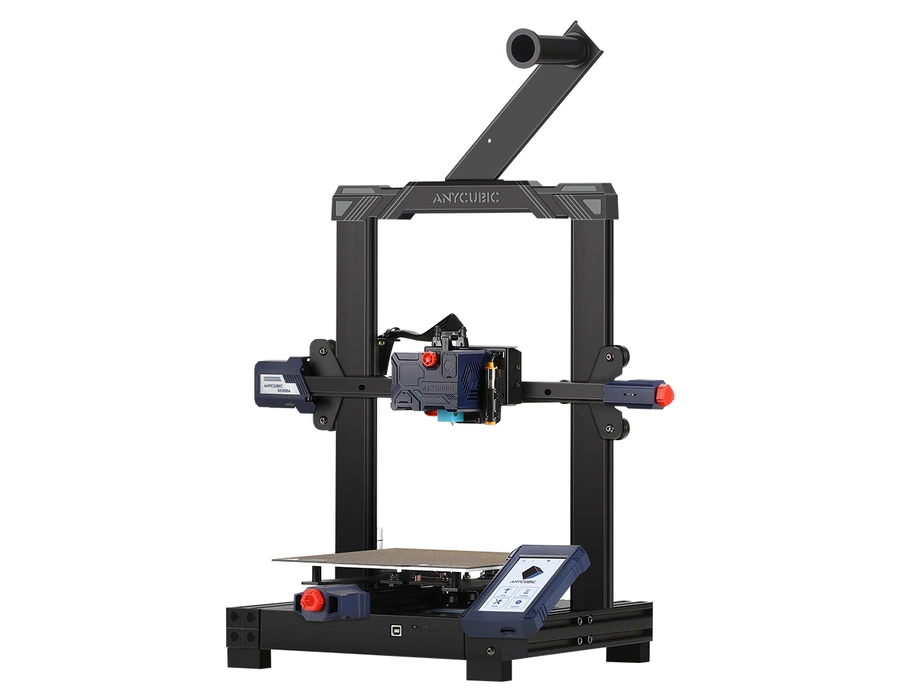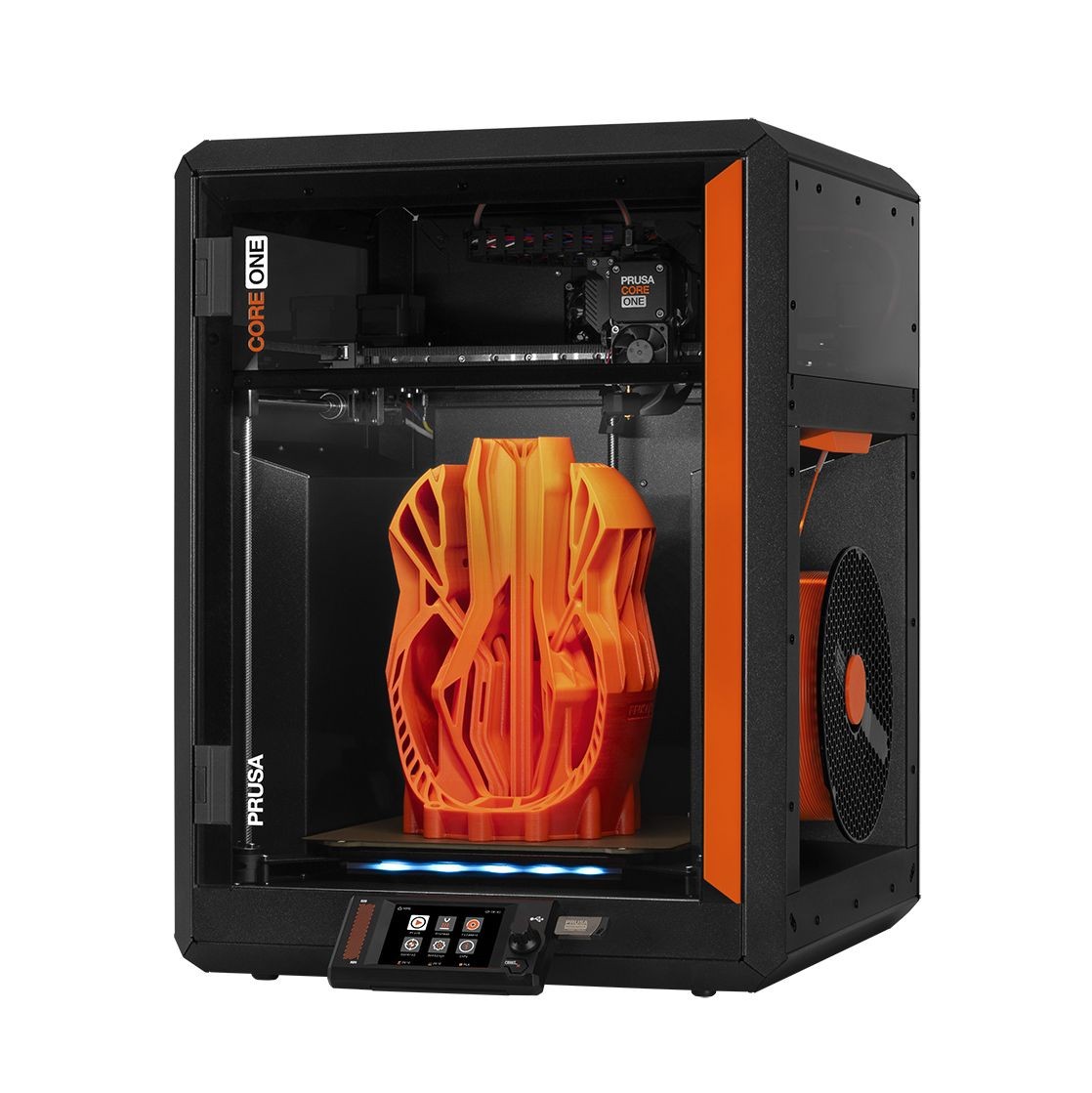Compare Kobra vs Core One
Comparison between the best 3D printers
Choose the best 3D printer at the best price. The cheapest 3D printers are here.
Buy a 3D printer here with 3D Fila.
 |
 |
|
| Model | Kobra |
Core One |
| Printing Material | Filament | Filament |
| Buy Filament for Anycubic Kobra | Buy Filament forPrusa Core One | |
| Estimated price | $259,00 | $1200,00 |
| Manufacturer | Anycubic | Prusa |
| Release Year | 2022 | 2025 |
| Print Volume [mm] | 220x220x250 | 250x220x270 |
| Printer Size [mm] | 486x430x486 | 385x340x620 |
| Weight [kg] | 7 | 14 |
| Power Loss Recovery | YES | YES |
| Enclosed printer | NO | YES |
| Bed Leveling | Automatic | Automatic |
| Filament End Sensor | NO | YES |
| Bed type | Heated | Heated |
| Power supply system | Direct Drive | Direct Drive |
| Standard nozzle | 0,4 | 0,4 |
| Maximum Nozzle Temperature [°C] | 260 | 300 |
| Maximum Bed Temperature [°C] | 110 | 120 |
| Maximum printing speed [mm/s] | 180 | 500 |
| Filament holder | YES | YES |
| Camera for supervision | NO | NO |
| Recommended filaments | PLA, PETG, Tritan, Flex, ABS | PLA, TPU, TPE, HIPS, ABS, PETG, WOOD, PC, PA, PVA, ASA |
| Recommended slicers | Cura, Simplify, Slic3r, IdeaMaker | Cura, Prusa Slicer, Orca |
| Maximum Resolution [mm] | 0,1 | 0,01 |
| Processor | xBuddy 32 bit | |
| Display | Display touchscreen 4,3'' | Touchscreen 3,5'' |
| Power Supply | 110/220V / 400W | 240 W |
| Connectivity | SD / USB | SD |
| Operating systems | Windows, Mac, Linux | Windows, Linux e Macbook |
| Date of registration in the system | 2022-11-09 | 2024-11-27 |
| Release date | 2022 | 2025 |
| Extra features | The Anycubic Kobra features automatic bed leveling and a direct extruder for easy filament handling. The print bed is coated with PEI on a flexible steel plate, improving adhesion and making prints easier to remove. The printer features sensorless homing and is designed to be easily disassembled for easy maintenance and customization. | The Prusa Core One is a CoreXY 3D printer featuring a robust steel frame, a 3.5" touchscreen, and a heated chamber for technical filaments. It offers 360° cooling for improved print quality and supports upgrades from the MK4S model. With a compact design, a print volume of 270x250x220 mm, and compatibility with the MMU3 for multi-color printing, it stands out for its ease of maintenance, precision, and speeds up to 260% faster than the MK3S+. |
| Support for multiple colors and materials (AMS and CFS) | NO | YES |
Notes * |
||
| Cost-benefit | 7 / 10 | 7 / 10 |
| Hardware | 2.1 / 10 | 6 / 10 |
| Tela | . | . |
| Print volume | 3 / 10 | 3 / 10 |
| Performance | 1 / 10 | 4 / 10 |
Conclusion |
| In comparing the Anycubic Kobra and Prusa Core One 3D printers, several key factors emerge that can help potential buyers make an informed decision. The Anycubic Kobra presents itself as an affordable, entry-level option, well-suited for hobbyists and those new to 3D printing. It features automatic bed leveling, a heated print bed, and a direct drive extruder, making it user-friendly and capable of printing various materials with reasonable quality. However, it lacks advanced features such as a filament end sensor and an enclosed build, which might limit its versatility for certain users. On the other hand, the Prusa Core One, although significantly more expensive, offers a range of high-end features that cater to more experienced users or professionals. With a larger maximum print volume, speed capabilities up to 500 mm/s, and support for a wider range of filaments, it is designed for more demanding applications. The inclusion of an enclosure enhances safety and allows for better environmental control, making it suitable for advanced materials. Furthermore, the printer is compatible with upgrades, providing a future-proof investment for users seeking to expand their capabilities. Ultimately, the choice between the two printers boils down to budget, experience level, and specific printing needs. For those looking for a cost-effective, straightforward solution, the Anycubic Kobra is an excellent pick. Conversely, for users ready to invest in superior performance, versatility, and advanced features, the Prusa Core One stands out as a compelling option. Both printers offer a favorable cost-benefit ratio within their respective use cases, making them strong contenders in the 3D printing market. |

